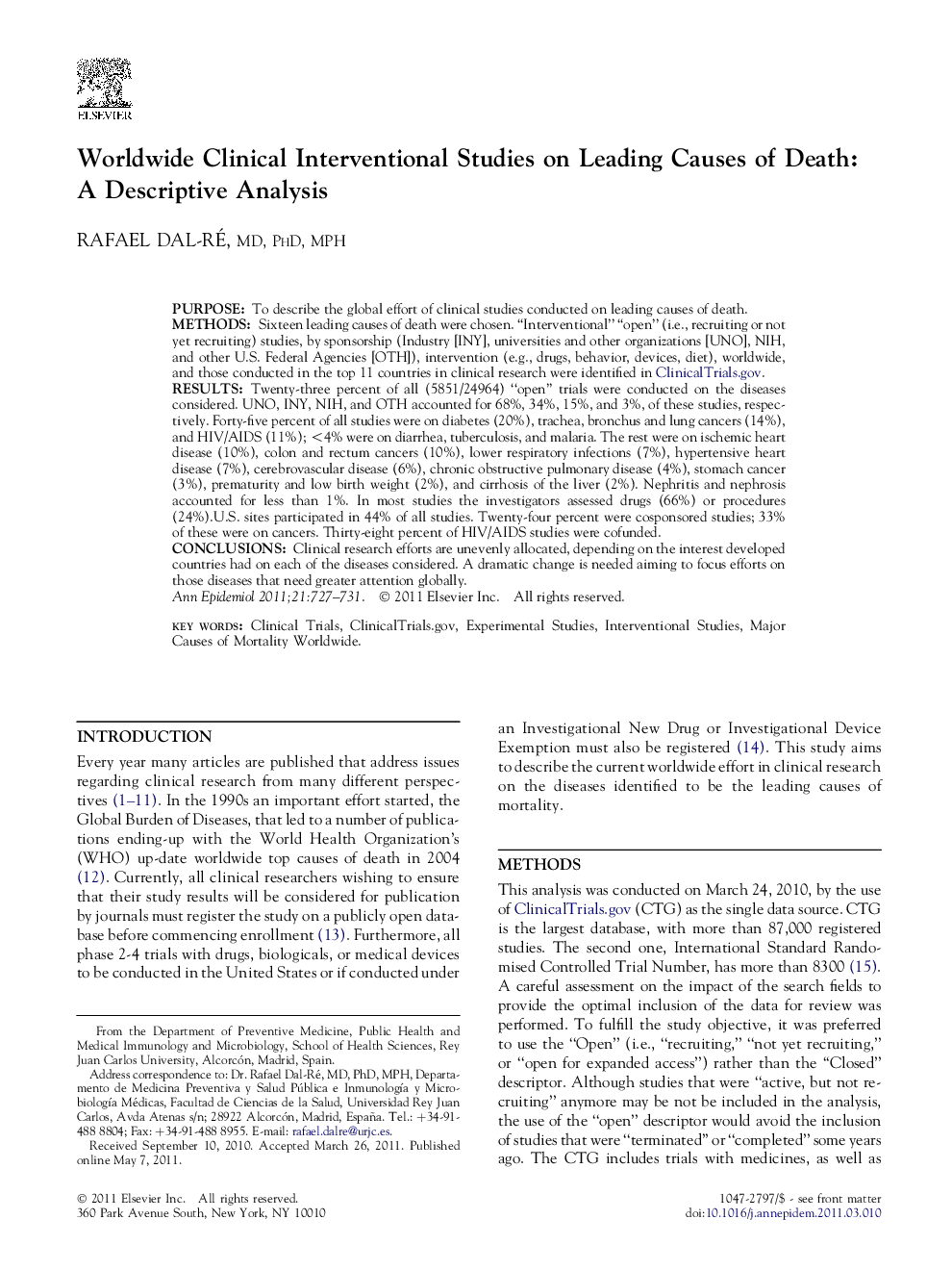| کد مقاله | کد نشریه | سال انتشار | مقاله انگلیسی | نسخه تمام متن |
|---|---|---|---|---|
| 3444544 | 1595286 | 2011 | 5 صفحه PDF | دانلود رایگان |

PurposeTo describe the global effort of clinical studies conducted on leading causes of death.MethodsSixteen leading causes of death were chosen. “Interventional” “open” (i.e., recruiting or not yet recruiting) studies, by sponsorship (Industry [INY], universities and other organizations [UNO], NIH, and other U.S. Federal Agencies [OTH]), intervention (e.g., drugs, behavior, devices, diet), worldwide, and those conducted in the top 11 countries in clinical research were identified in ClinicalTrials.gov.ResultsTwenty-three percent of all (5851/24964) “open” trials were conducted on the diseases considered. UNO, INY, NIH, and OTH accounted for 68%, 34%, 15%, and 3%, of these studies, respectively. Forty-five percent of all studies were on diabetes (20%), trachea, bronchus and lung cancers (14%), and HIV/AIDS (11%); <4% were on diarrhea, tuberculosis, and malaria. The rest were on ischemic heart disease (10%), colon and rectum cancers (10%), lower respiratory infections (7%), hypertensive heart disease (7%), cerebrovascular disease (6%), chronic obstructive pulmonary disease (4%), stomach cancer (3%), prematurity and low birth weight (2%), and cirrhosis of the liver (2%). Nephritis and nephrosis accounted for less than 1%. In most studies the investigators assessed drugs (66%) or procedures (24%).U.S. sites participated in 44% of all studies. Twenty-four percent were cosponsored studies; 33% of these were on cancers. Thirty-eight percent of HIV/AIDS studies were cofunded.ConclusionsClinical research efforts are unevenly allocated, depending on the interest developed countries had on each of the diseases considered. A dramatic change is needed aiming to focus efforts on those diseases that need greater attention globally.
Journal: Annals of Epidemiology - Volume 21, Issue 10, October 2011, Pages 727–731